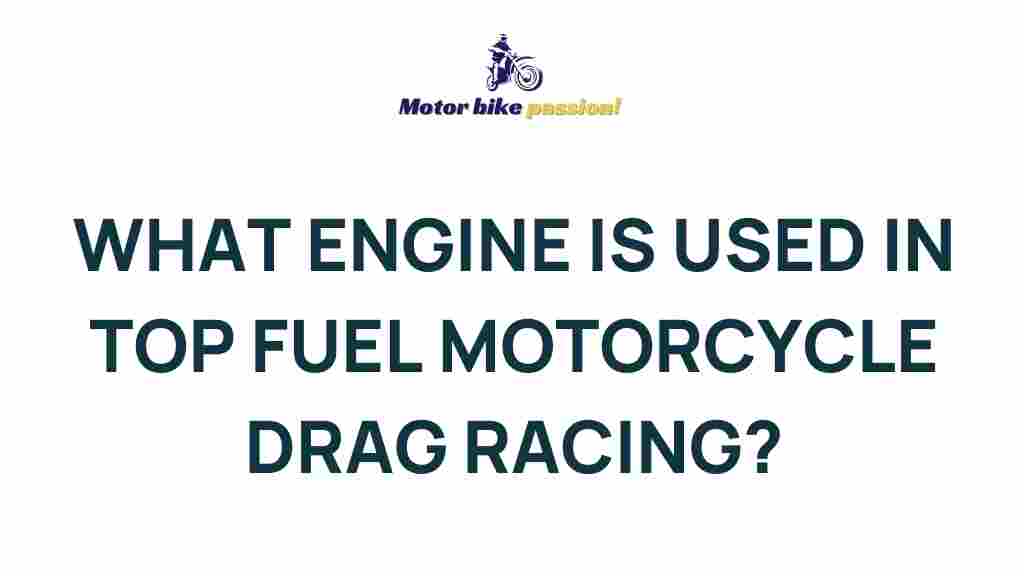Unleashing Power: Inside the Engines of Top Fuel Motorcycle Drag Racing
Top fuel motorcycle drag racing is a thrilling sport that combines the raw power of engineering with the skill of the rider. These machines are not just motorcycles; they are marvels of technology, designed to deliver unparalleled speed and performance on the drag strip. In this article, we will delve deep into the engines that power these incredible machines, exploring their horsepower, combustion technology, and the engineering feats that allow them to reach astonishing speeds.
Understanding Top Fuel Motorcycles
Top fuel motorcycles are among the fastest accelerating vehicles on the planet. They are specially designed for drag racing, where the objective is to cover a quarter-mile distance in the shortest time possible. To achieve this, top fuel motorcycles utilize advanced engines that produce extreme horsepower and torque.
The Anatomy of a Top Fuel Engine
The heart of a top fuel motorcycle is its engine, which is engineered for maximum performance. Here’s how these engines are structured:
- Engine Type: Top fuel motorcycles typically use supercharged V-twin engines that can displace up to 2000cc.
- Horsepower: These engines can produce over 1,500 horsepower, allowing them to reach speeds exceeding 200 mph in mere seconds.
- Combustion Process: The combustion process in top fuel engines is highly refined, utilizing a mixture of nitromethane and alcohol to maximize power output.
- Technology Integration: Modern top fuel engines incorporate advanced technology such as electronic fuel injection and data acquisition systems to optimize performance.
The Role of Horsepower in Performance
Horsepower is a critical factor in the performance of top fuel motorcycles. The more horsepower an engine produces, the faster the motorcycle can accelerate. Here’s a closer look at how horsepower influences performance:
- Acceleration: With upwards of 1,500 horsepower, these bikes can go from 0 to 60 mph in less than a second.
- Top Speed: The combination of high horsepower and low weight allows these motorcycles to achieve top speeds that are truly mind-boggling.
- Drag Racing Dynamics: The immense power generated must be effectively managed to maintain traction and control during a race.
Combustion Technology: The Engine’s Secret Sauce
The combustion technology used in top fuel engines is what sets them apart from standard motorcycles. Here are some key elements:
- Nitromethane Fuel: This specialized fuel burns more efficiently than gasoline, providing more energy per unit volume.
- Supercharging: Superchargers compress the intake air, allowing the engine to burn more fuel and generate more power.
- Cooling Systems: Advanced cooling technologies are implemented to keep engine temperatures under control during the intense heat of a race.
Step-by-Step: How Top Fuel Engines Work
To understand the performance of top fuel motorcycles, it’s essential to grasp how their engines function. Here’s a step-by-step breakdown:
- Intake Stroke: Air and nitromethane fuel enter the combustion chamber through a supercharger.
- Compression Stroke: The piston compresses the air-fuel mixture, increasing its temperature and pressure.
- Power Stroke: A spark ignites the compressed mixture, causing a rapid expansion that drives the piston down.
- Exhaust Stroke: The spent gases are expelled, and the cycle begins anew.
Engineering Challenges in Top Fuel Drag Racing
Building a top fuel motorcycle isn’t without its challenges. Engineers must address several critical issues to ensure optimal performance:
- Weight Reduction: Every ounce counts, and engineers use lightweight materials to enhance speed.
- Durability: The extreme forces during acceleration require components that can withstand immense stress.
- Safety Features: Safety is paramount, and top fuel motorcycles are equipped with advanced safety systems to protect riders.
Troubleshooting Common Issues in Top Fuel Engines
Even the most advanced engines can encounter problems. Here are common issues and troubleshooting tips:
- Fuel Delivery Problems: Ensure that the fuel system is clean and that the fuel pump is functioning correctly.
- Ignition Issues: Check spark plugs and ignition timing to ensure proper combustion.
- Overheating: Monitor engine temperatures and inspect cooling systems for leaks or blockages.
The Future of Top Fuel Motorcycle Drag Racing
The world of top fuel motorcycle drag racing is constantly evolving. Innovations in technology and engineering continue to push the boundaries of speed and performance. Here are some trends to watch:
- Hybrid Technologies: The integration of hybrid systems could revolutionize performance while reducing emissions.
- Advanced Materials: The use of carbon fiber and other composites can lead to lighter and stronger components.
- Data Analytics: Enhanced data collection and analysis can help teams make real-time adjustments for improved performance.
Conclusion
Top fuel motorcycle drag racing is a blend of art and science, where engineering prowess meets raw power. The engines that drive these remarkable machines are a testament to the capabilities of modern technology. With advancements in combustion technology, horsepower, and overall performance, the future of top fuel racing looks promising.
As enthusiasts and engineers work together to push the limits, we can only anticipate what incredible feats will be achieved on the drag strip. For those eager to learn more about the intricacies of drag racing and stay updated on the latest trends, be sure to check out this resource for in-depth insights.
Whether you are a fan of the sport or a budding engineer, understanding the power behind top fuel motorcycle drag racing will deepen your appreciation for this exhilarating competition.
For more information on motorcycle performance and technology, visit this site.
This article is in the category Gears and created by MotorBikePassion Team
